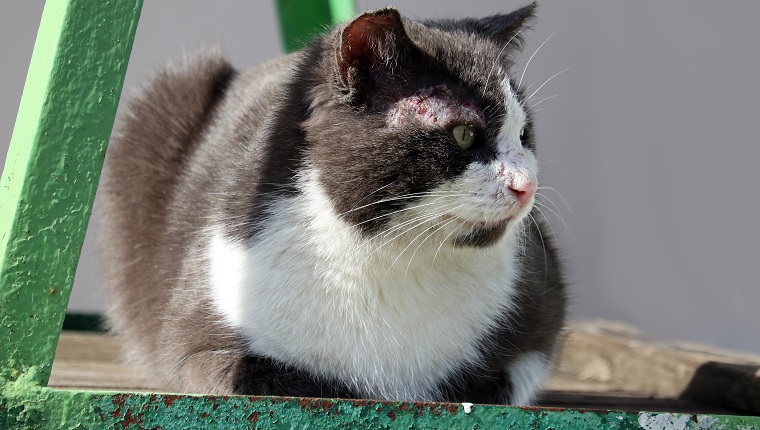Scabies is a condition in cats caused by very small mites. These mites can make a cat severely itchy and scratch so much that they suffer from hair loss and skin irritations.
The condition is considered to be very contagious; although, it’s actually more likely to appear in dogs.
If you see the signs of scabies in your cat, then you must get to a veterinarian for a proper diagnosis and treatment. Here’s what you should know about the symptoms, causes, and treatments for scabies in cats.
Symptoms Of Scabies In Cats
In general, scabies in cats usually begins to affect the feline’s face and ears. But if left untreated, it can spread throughout the rest of the body.
The condition normally appears with the following symptoms:
- Severe itchiness and scratching
- Hair loss (usually in patches)
- Skin infections
- Restlessness
Causes Of Scabies In Cats

Scabies in cats is caused by the presence of extremely small mites. These mites can be transmitted between cats and can even move from felines to humans.
Outdoors cats are often more likely to develop the condition due to coming into close contact with other stray and feral cats.
The mites that cause scabies in cats are called Notoedres cati. The female mites can dig and burrow into the cat’s skin, and that’s where they lay their eggs.
Treatments For Scabies In Cats
If your veterinarian suspects that your cat is suffering from scabies, they’ll perform an examination. Vets often examine skin scrapings under a microscope to form a diagnosis.
When the vet confirms a scabies diagnosis, they’ll advise you to keep your cat in isolation so that the mites do not pass to other animals or humans.
The vet will likely prescribe medication designed to get rid of the existing mites. This could be a topical application, a shampoo, or even an injection.
If your cat’s skin is in badly irritated condition, the vet may also suggest antibiotics to help the skin recover. As always, if your vet prescribes a course of antibiotics, it’s imperative that you follow the precise dosage instructions and complete the full course of medicine.
When helping a cat recover from scabies, it’s also prudent to thoroughly wash or replace all of their bedding, food bowls, and toys. You should also keep your cat indoors so that they don’t risk picking up more mites from other cats and outdoor animals.
Have you ever cared for a cat suffering from scabies? What advice did your vet give you on helping your cat recover? Let us know in the comments section below.




